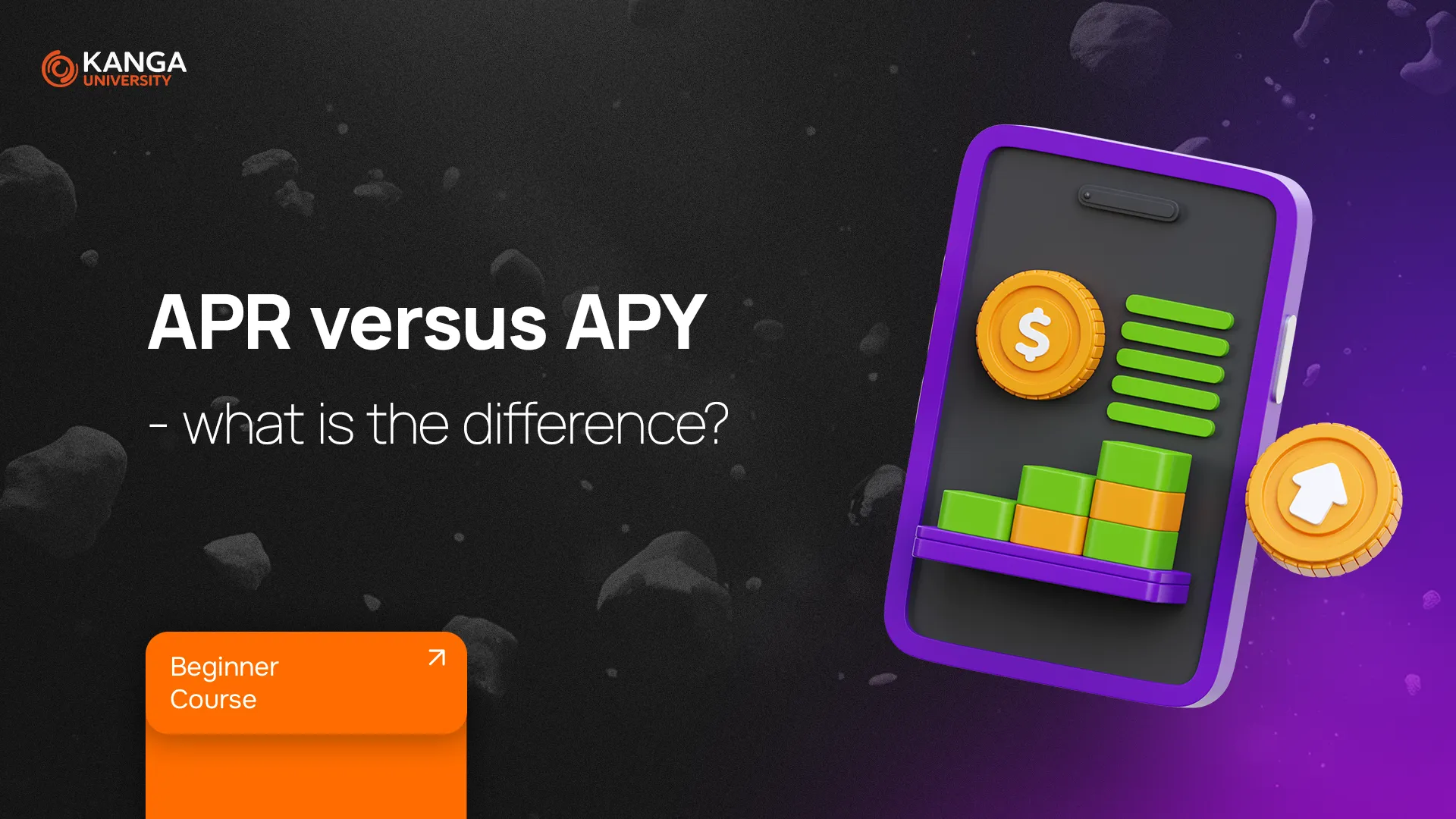
If you are involved in cryptocurrency investing, you’ve likely come across the terms APR (Annual Percentage Rate) and APY (Annual Percentage Yield). These two financial metrics are crucial in areas like staking, liquidity pools, and DeFi lending.
Understanding the difference between APR and APY can help you maximize returns and avoid unexpected costs.
What Is APR and How Is It Calculated?
Definition of APR
APR, or Annual Percentage Rate, is an interest rate that does not include compound interest. It tells you how much you will earn or owe over a year, but without reinvesting any of the interest you accumulate.
Example of APR
- If you invest $100 at 5% APR, after one year, you will earn $5 in interest.
- If you borrow $100 at 5% APR, after one year, you will owe $105 total.
Formula for APR Calculation
A = P × (1 + R × T)
Where:
- A = Final amount after the investment period
- P = Initial investment or loan amount
- R = Interest rate in decimal form (e.g., 5% = 0.05)
- T = Time in years
Example Calculation for APR
If you invest 2 ETH in a DeFi liquidity pool with an APR of 25% and hold it for 1 year:
A = 2 × (1 + 0.25 × 1) = 2.5 ETH
After one year, your investment increases by 0.5 ETH.
What Is APY and How Is It Calculated?
Definition of APY
APY, or Annual Percentage Yield, includes compound interest. This means that instead of earning interest only on the initial investment, you also earn interest on previously earned interest.
Formula for APY Calculation
A = P × (1 + R/N)^N
Where:
- A = Final amount after the investment period
- P = Initial investment or loan amount
- R = Interest rate in decimal form (e.g., 24% = 0.24)
- N = Number of compounding periods per year
Example APY Calculation
If you invest 1 ETH at 24% APY, with interest compounded twice per year (N = 2):
A = 1 × (1 + 0.24/2)^2A = 1 × (1.12)^2 = 1.2544 ETH
After one year, your investment grows to 1.2544 ETH, which is more than with 24% APR, due to compounding interest.
APR vs. APY – Key Differences
1. Does It Include Compound Interest?
- APR (Annual Percentage Rate) → No, it does not include compounding. Interest is only applied to the initial amount.
- APY (Annual Percentage Yield) → Yes, it includes compounding, meaning you earn interest on previously earned interest.
2. How Interest Is Calculated
- APR → Simple interest: calculated linearly based on the original amount.
- APY → Uses compounding, meaning the frequency of interest application (daily, weekly, monthly) affects the final amount.
3. Impact on Investments
- APR → Lower long-term earnings, as it does not reinvest profits.
- APY → Higher earnings because of reinvested interest.
4. Impact on Loans
- APR → More beneficial for borrowers since the interest does not grow exponentially.
- APY → Can result in higher costs for loans, as interest compounds over time.
5. When Should You Use Each?
- APR → When borrowing money or investing in products without compounding interest.
- APY → When looking to maximize returns through reinvestment of interest.
6. Practical Example
- 10% APR → If you invest $1,000 for one year, you earn $100 in interest.
- 10% APY with monthly compounding → Your total return will be around $1,104.71 instead of $1,100, because each month, interest is added to the balance and reinvested.
Why Does This Matter in Crypto?
In DeFi (Decentralized Finance), APR and APY are widely used in staking, lending, and liquidity pools.
- If you are borrowing crypto → APR is better, since it does not include compounding, reducing total interest owed.
- If you are investing in staking or DeFi → APY is better, because compounding significantly boosts profits.
For example, if Ethereum staking offers 5% APR, but interest is compounded daily, the real APY might be around 5.12% or more.
Summary
- APR is simple interest, making it better for borrowers.
- APY includes compound interest, which is more beneficial for investors.
- In DeFi, always check whether an interest rate is listed as APR or APY—this can significantly impact your final returns or costs.
By understanding these concepts, you can make smarter investment decisions and avoid unexpected fees in the crypto world.